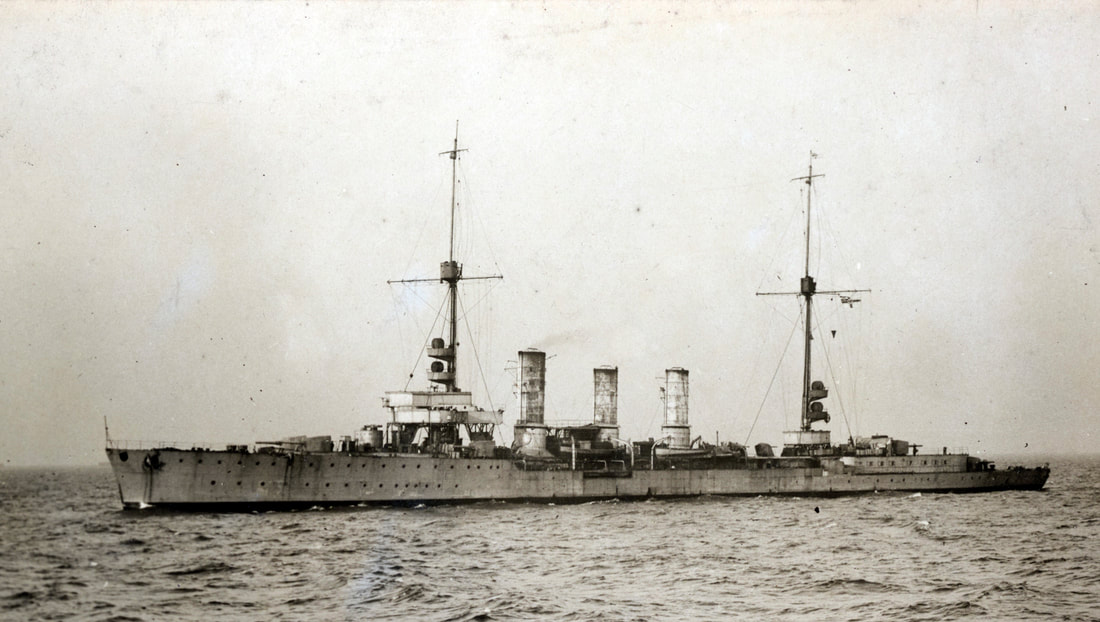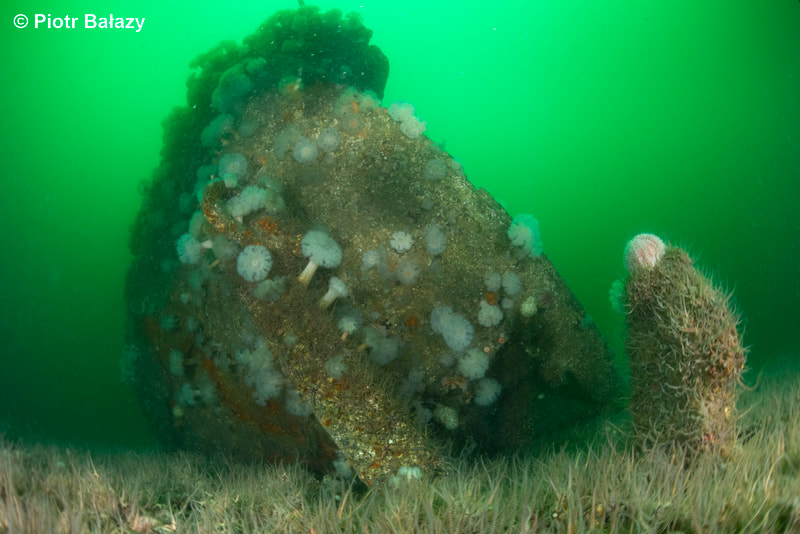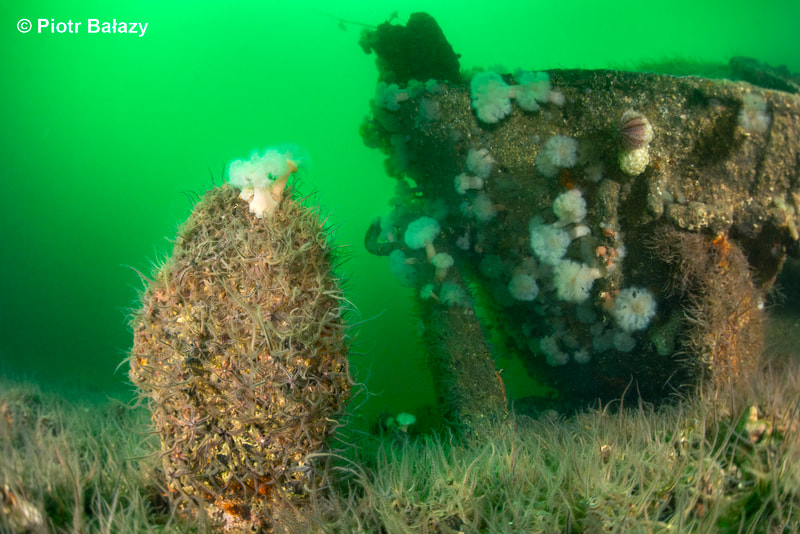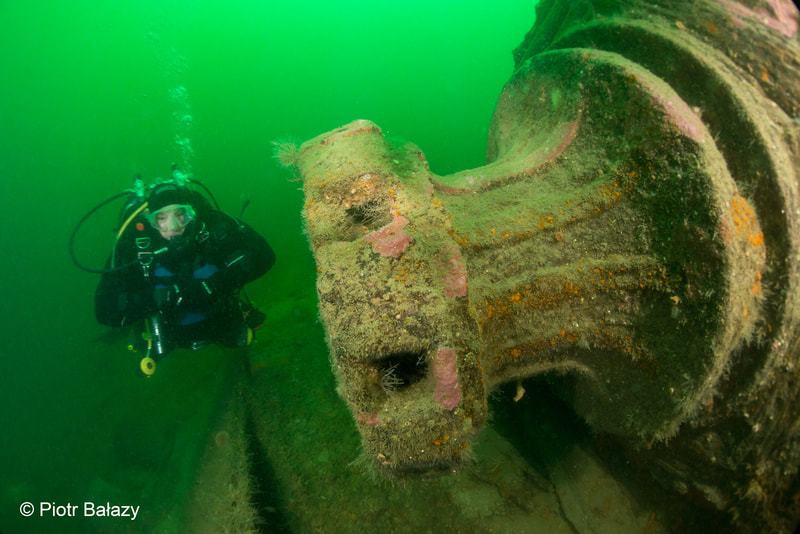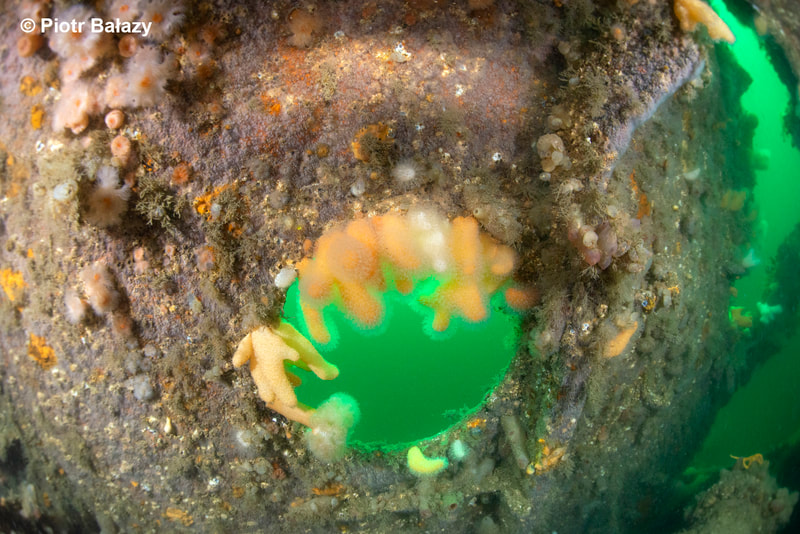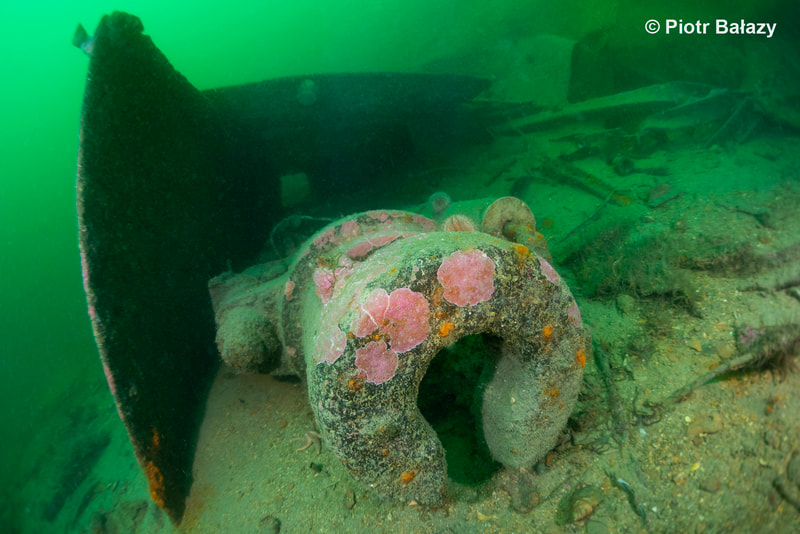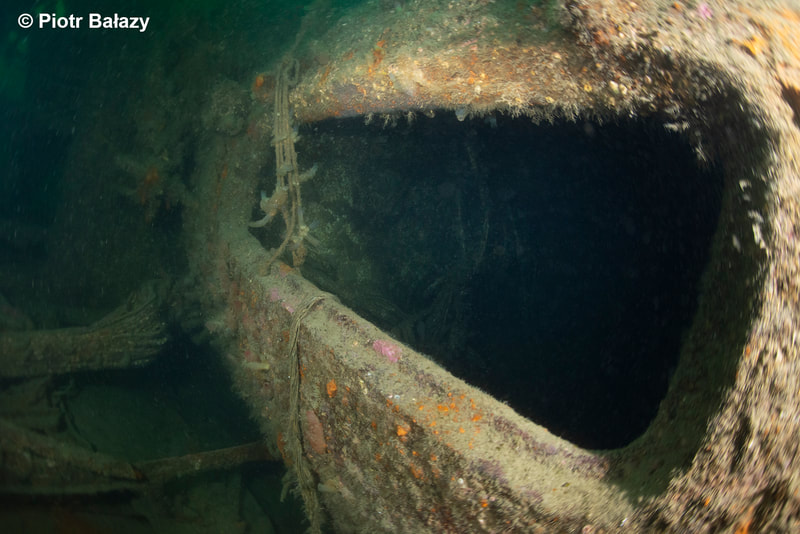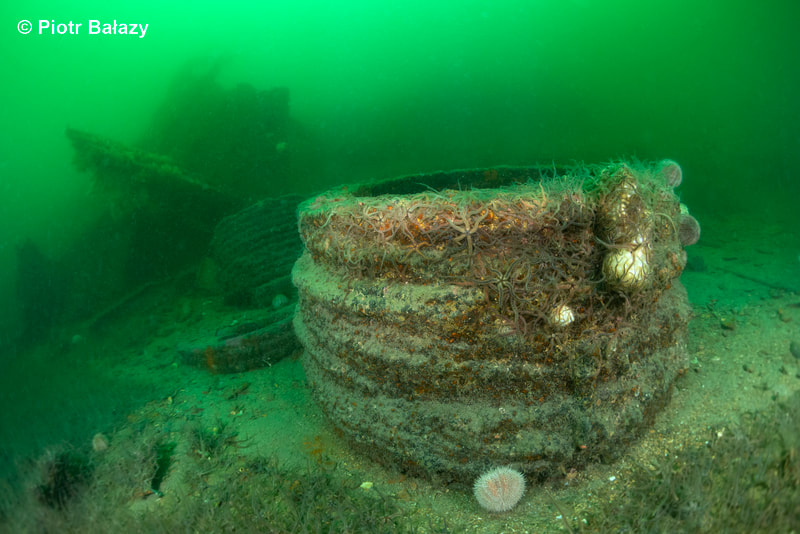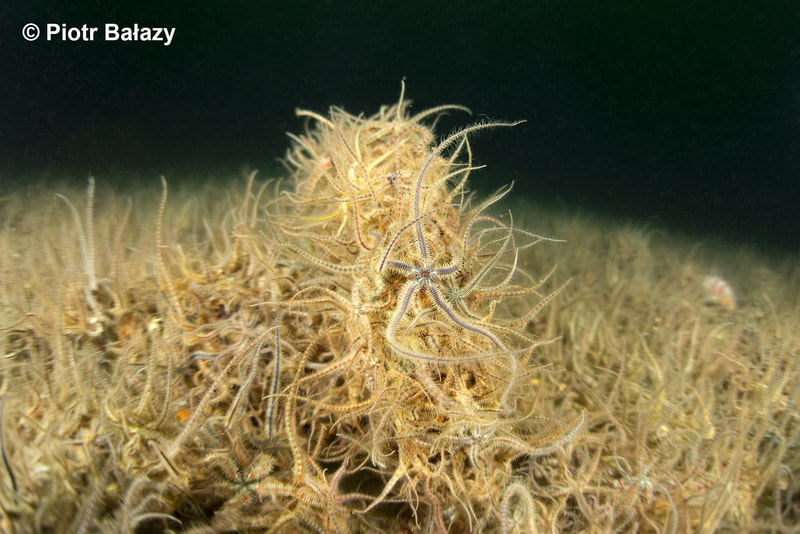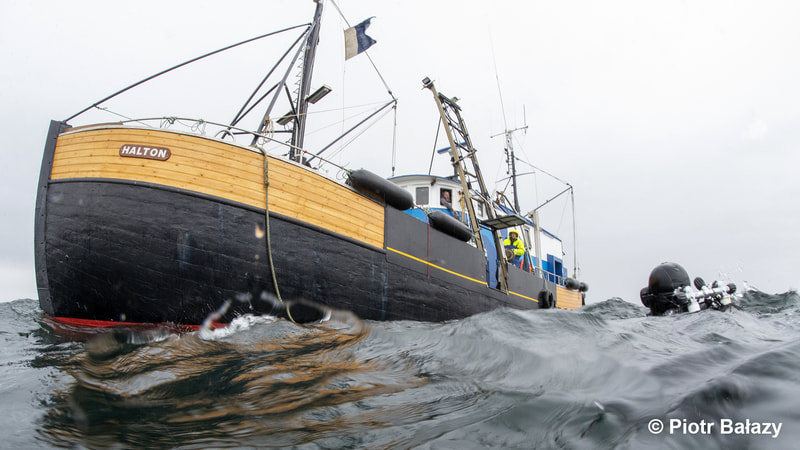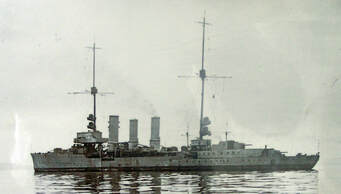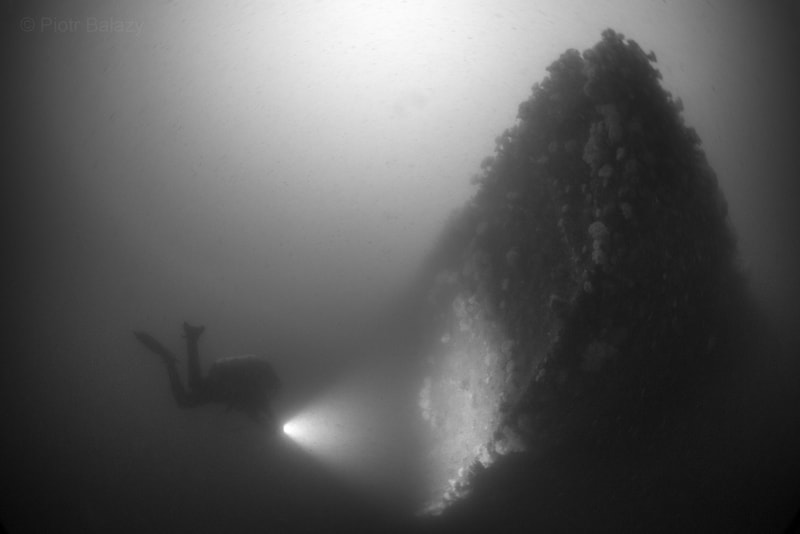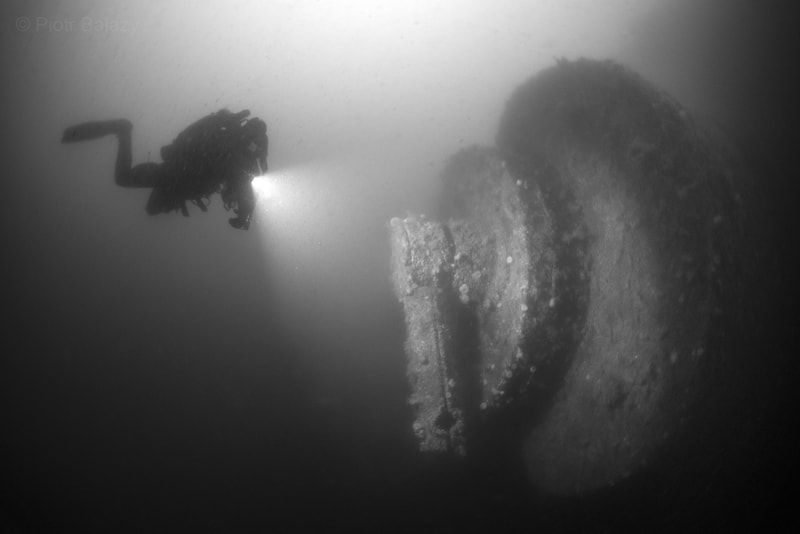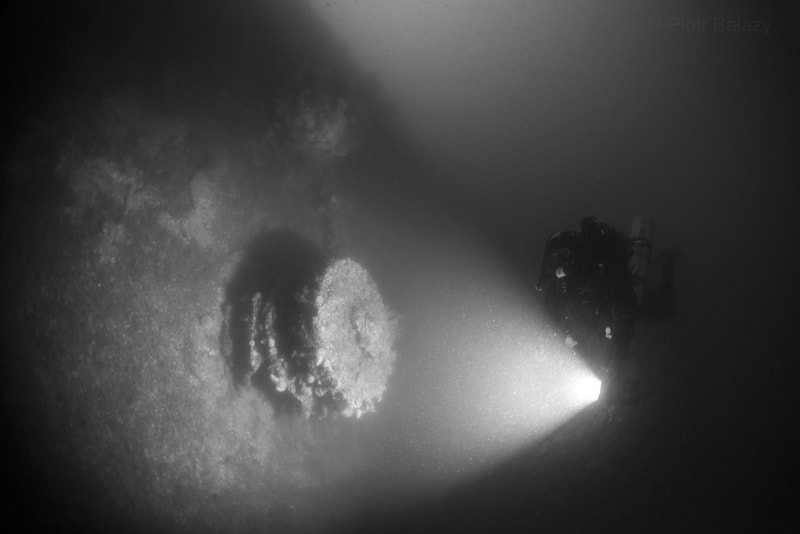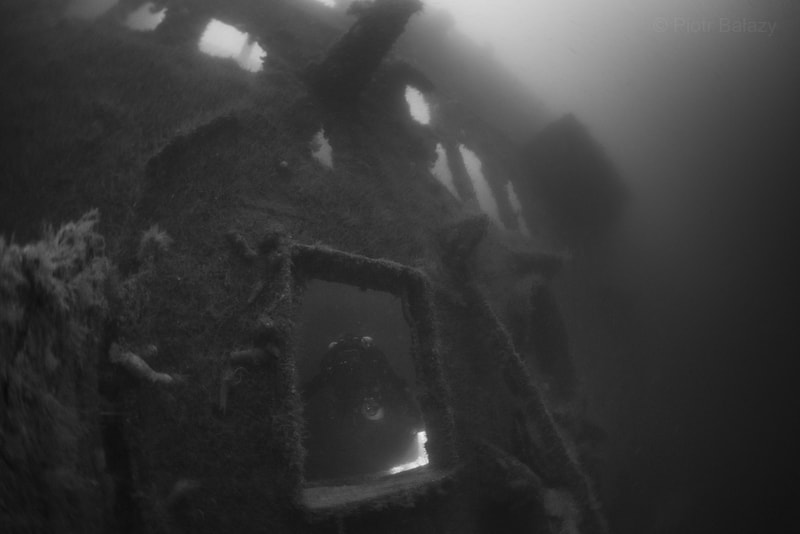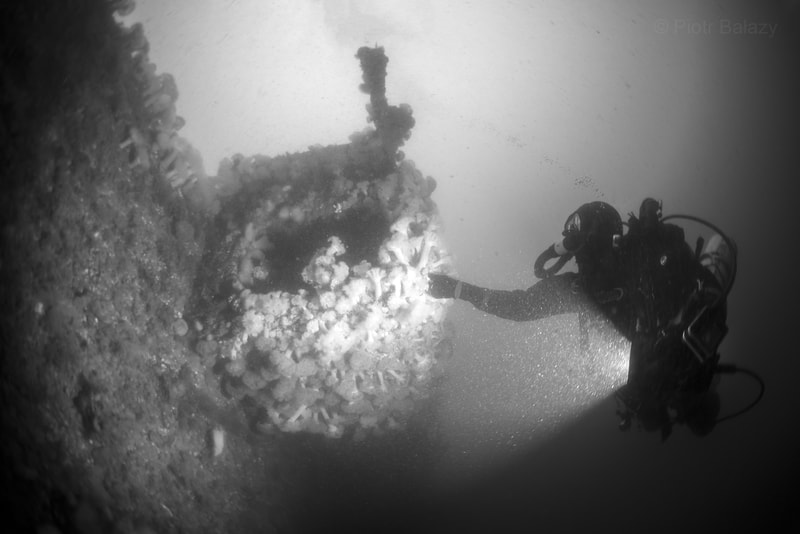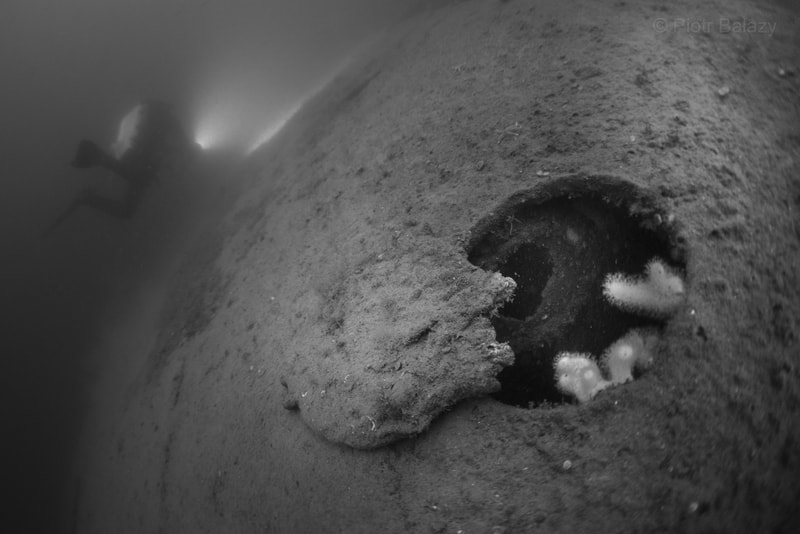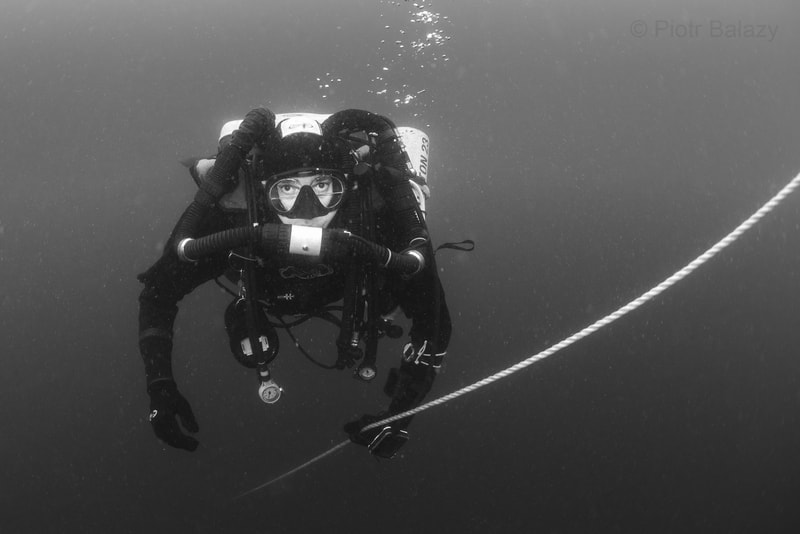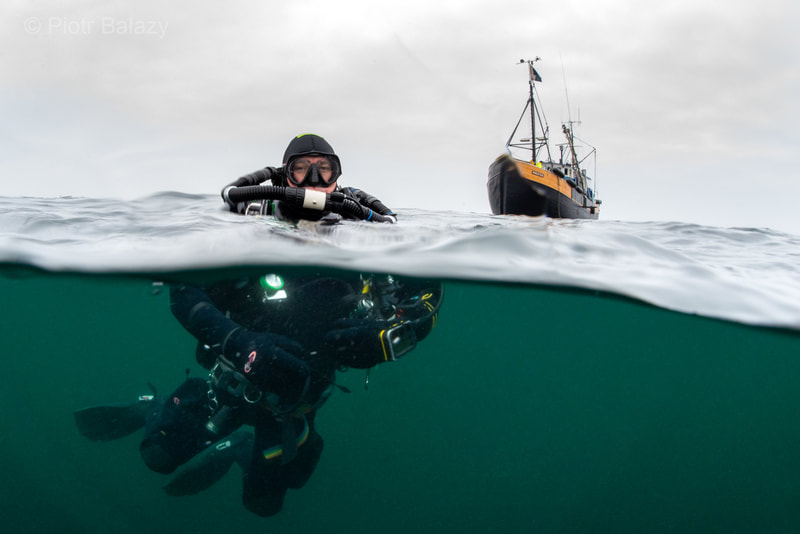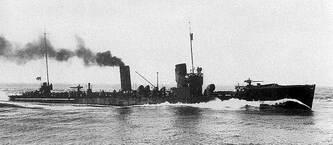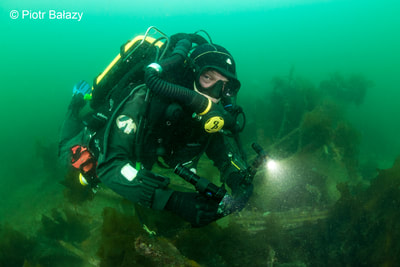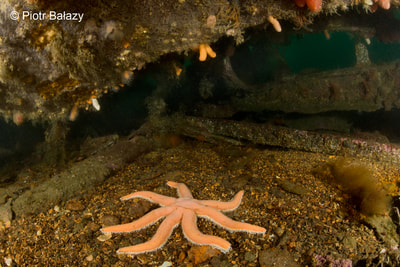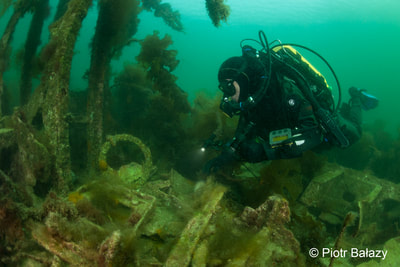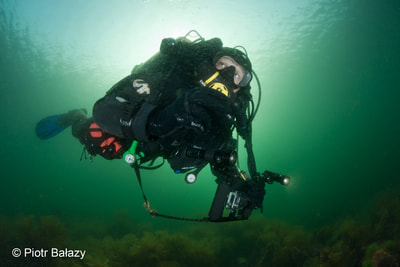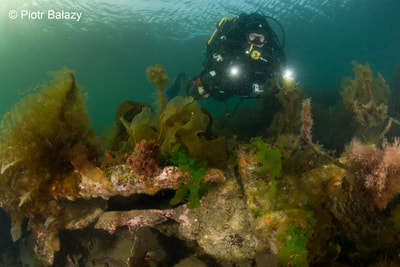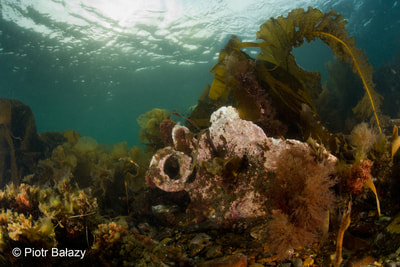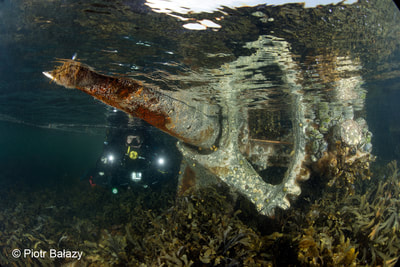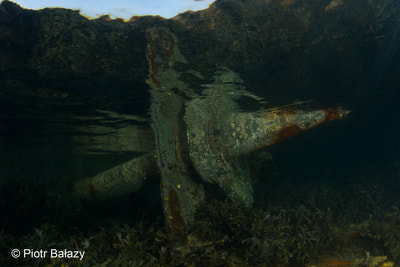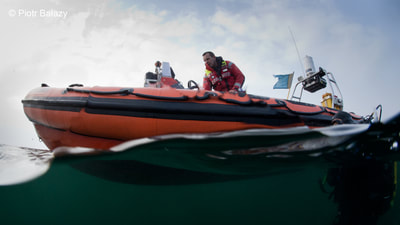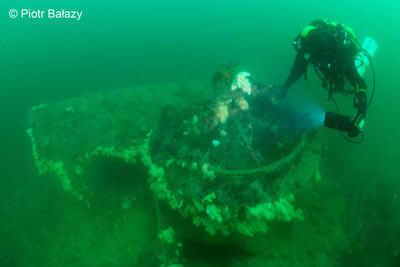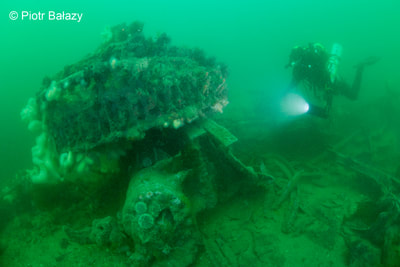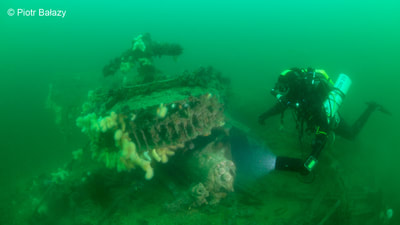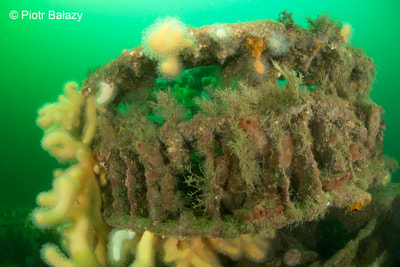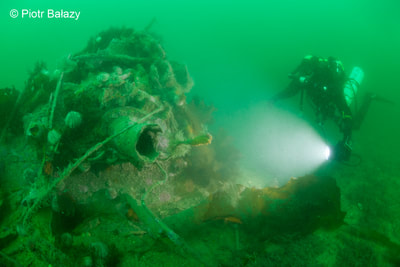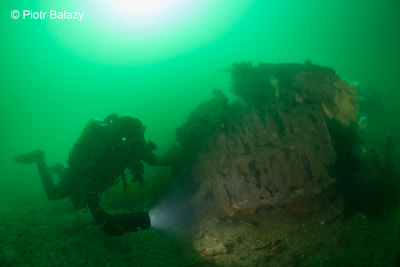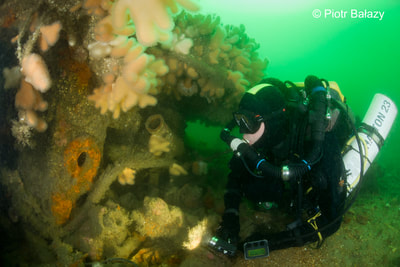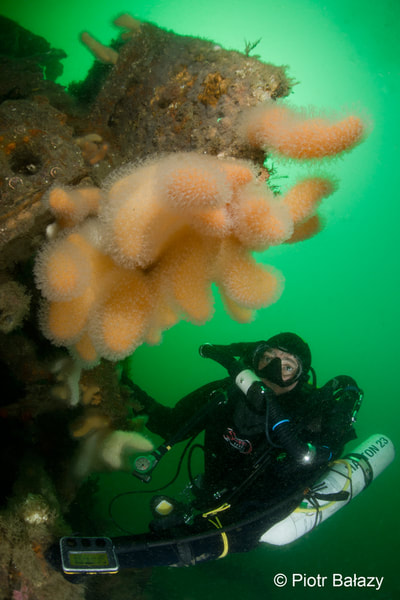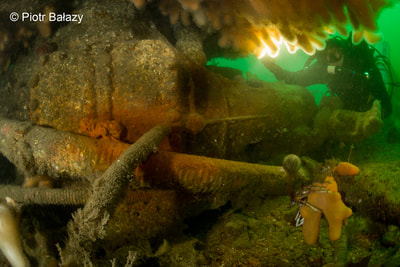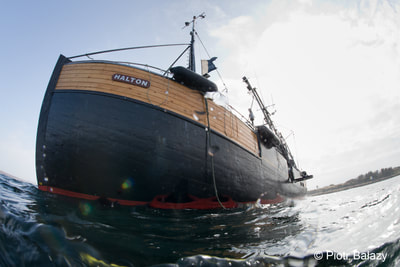SMS KARLSRUHEThe only Königsberg class light cruiser scuttled on 21st of June 1919 in Scapa Flow. The other two, out of three, sister ships (SMS Emden, Königsberg, Nürnberg) were managed to be beached by Brits. The 112 m long (displacement: 5350 long ton) ship, armed with eight 15 cm SK L/45 guns, was built and commissioned into the Kaiserliche Marine High Seas Fleet in 1916. In her brief service history, she took part, among others, in Operation Albion in the Baltic Sea (on the way also in the Puck Bay). The wreck was sold in 1962 and some of the most precious parts (like brass bridge, engine room) was salvaged by blasting. She is said therefore to be the most broken up cruiser remaining in Scapa. Lying on up to 27-30 m depth the wreck has still a lot to offer.
|
SMS CÖLN
155.5 m long (displacement of 7486 long ton) light cruiser launched on 5th October 1916 at the Blohm & Voss shipyard in Hamburg. Due to the lack of personnel she entered her service in High Seas Fleet as part of the II Scouting Group ten months before the end of the WWI and did not take part in any battles except for mining and patrolling of the German Bight. Now lying on her starboard side at 36 m depth SMS Cöln is said to be the most intact of the four cruisers of the Scapa Flow, but some of its parts were salvaged, like the propellers. The second ship of this class to be completed, the sister ship SMS Dresden, also lies there.
|
S36Some identification work is still in progress but till now these are most probably the remains of a German V25 Class torpedo boat, S36 (std. displacement of 809 tonnes), built in 1915 in Schichau-Werke in Elbing (PL. Elbląg). She took part in the Battle of the Gulf of Riga and the Battle of Jutland. Then she was interned. When the great scuttle took place on 21st of June 1919 the Royal Navy boarding company beached the ship. Refloated in 1925 by Cox & Danks was run ashore at Cava and scrapped. Today the leaning mast is protruding above the sea surface, right next to a anchor chain leftovers. The better preserved, deeper located midship and stern section wreckage is covered with kelp. The maximum depth is only 10 m. Photos taken within a wider Scapa Flow Scrap Site project being undertaken by Sula Diving on behalf of Historic Environment Scotland to document underwater heritage of Scapa Flow. The full report will be released at the end of 2018 and will be published on the Scapa Flow Wrecks website. The project aims to embrace citizen science contributions in a series of smaller investigations such as this.
|
B109 "DESTROYER"Identification work is still in progress. Remains are lying on 15 m depth. Photos taken within a wider Scapa Flow Scrap Site project being undertaken by Sula Diving on behalf of Historic Environment Scotland to document underwater heritage of Scapa Flow. The full report will be released at the end of 2018 and will be published on the Scapa Flow Wrecks website. The project aims to embrace citizen science contributions in a series of smaller investigations such as this.
|
© 2016-2024 Piotr Bałazy. All rights reserved.

